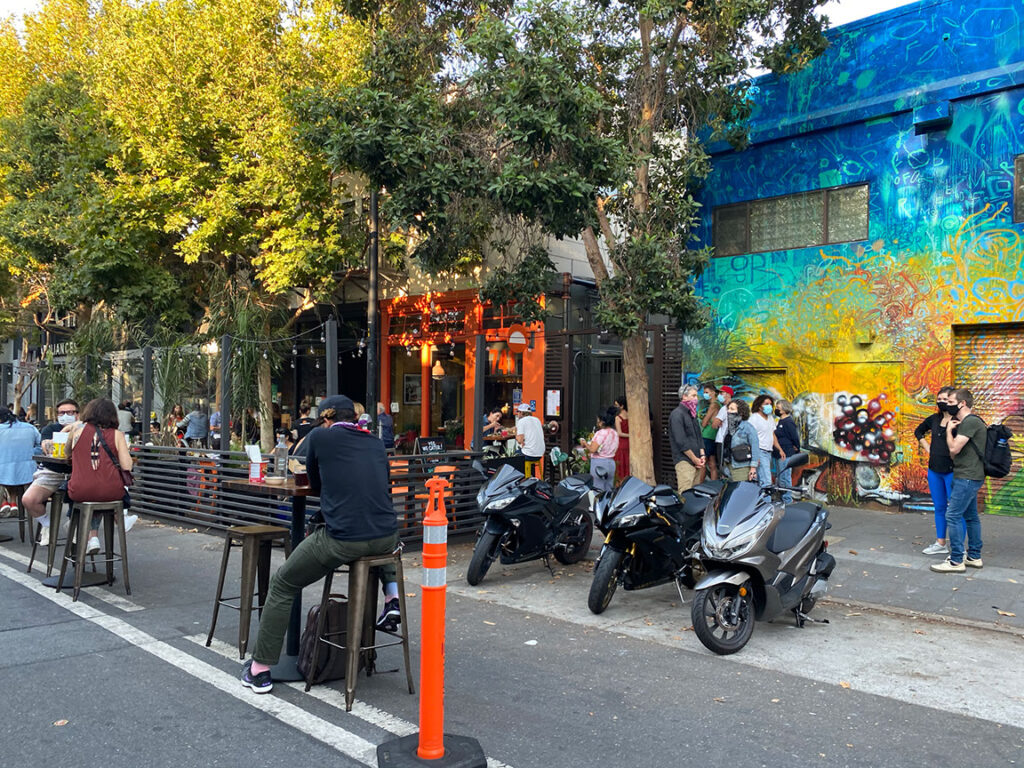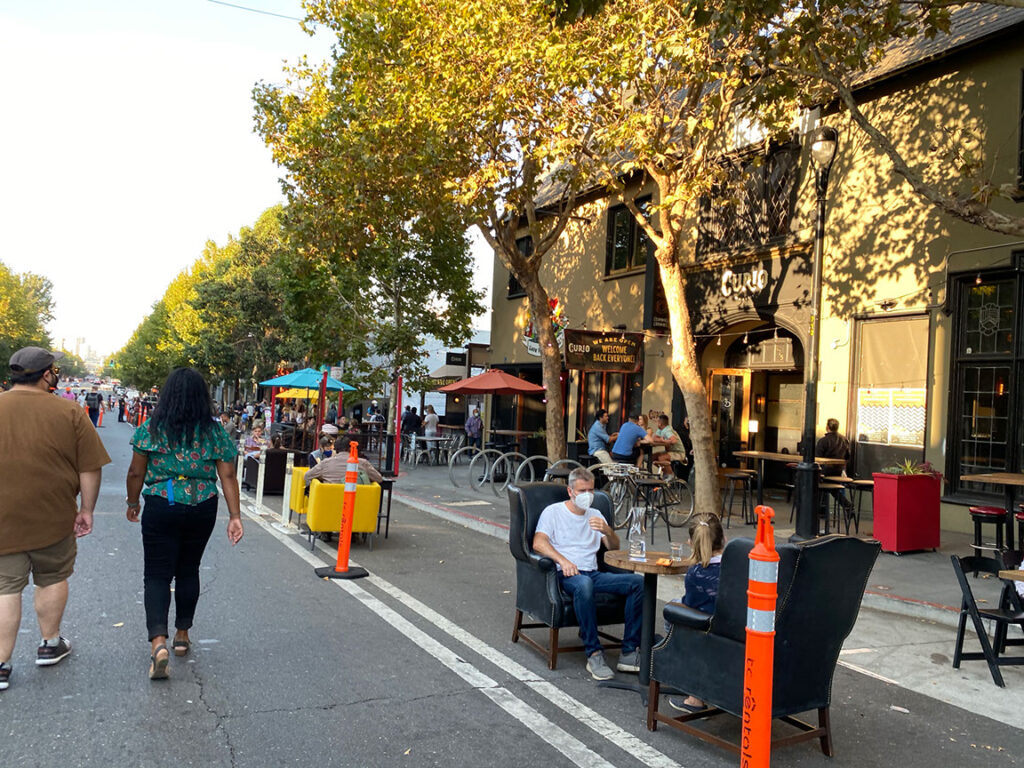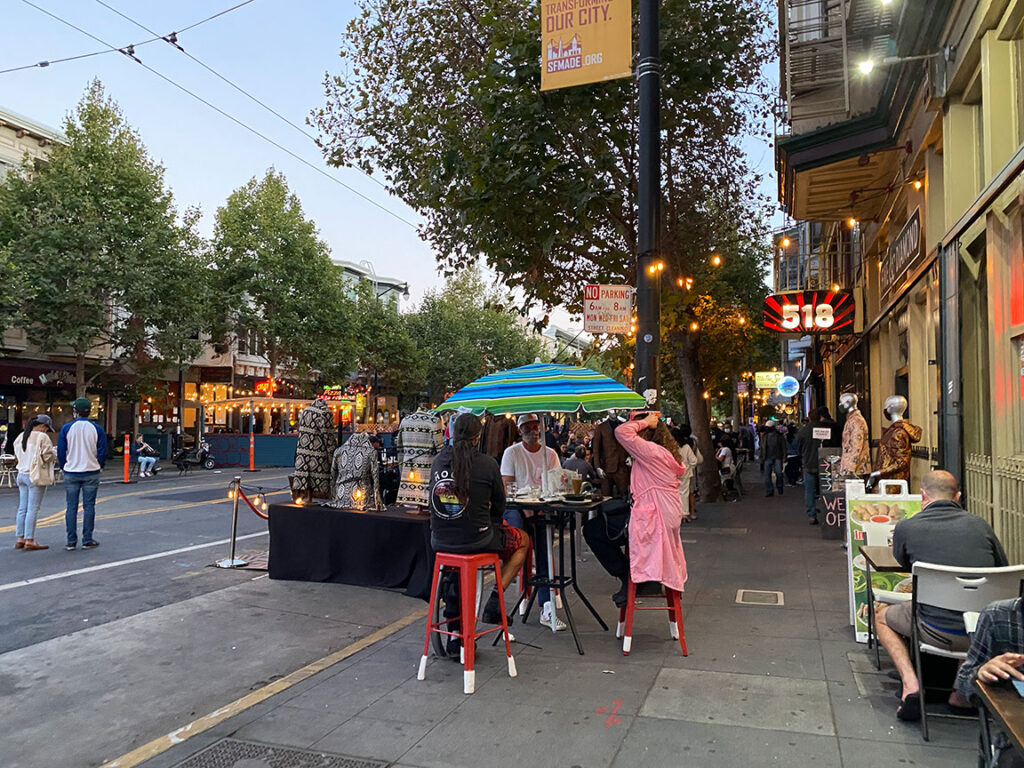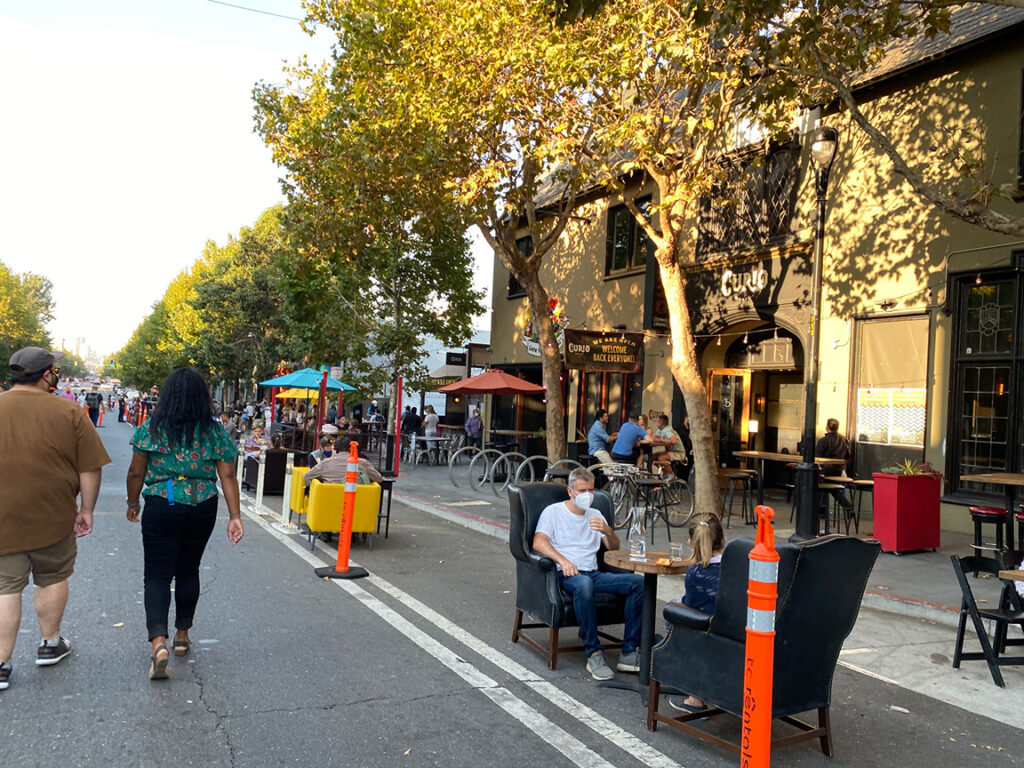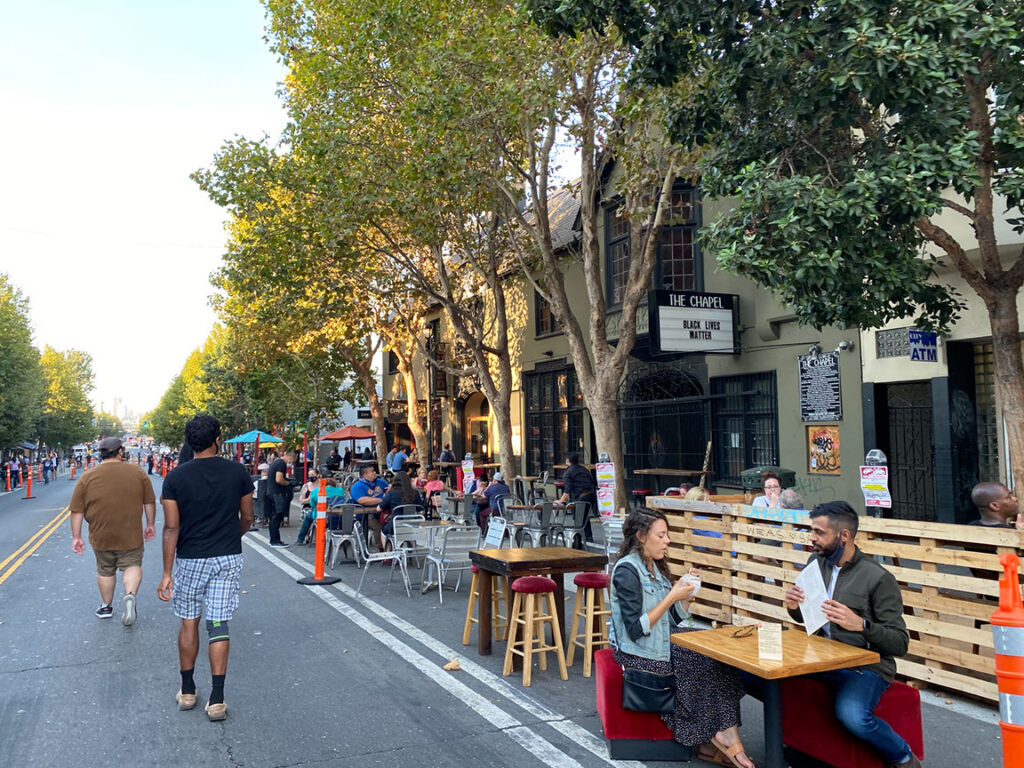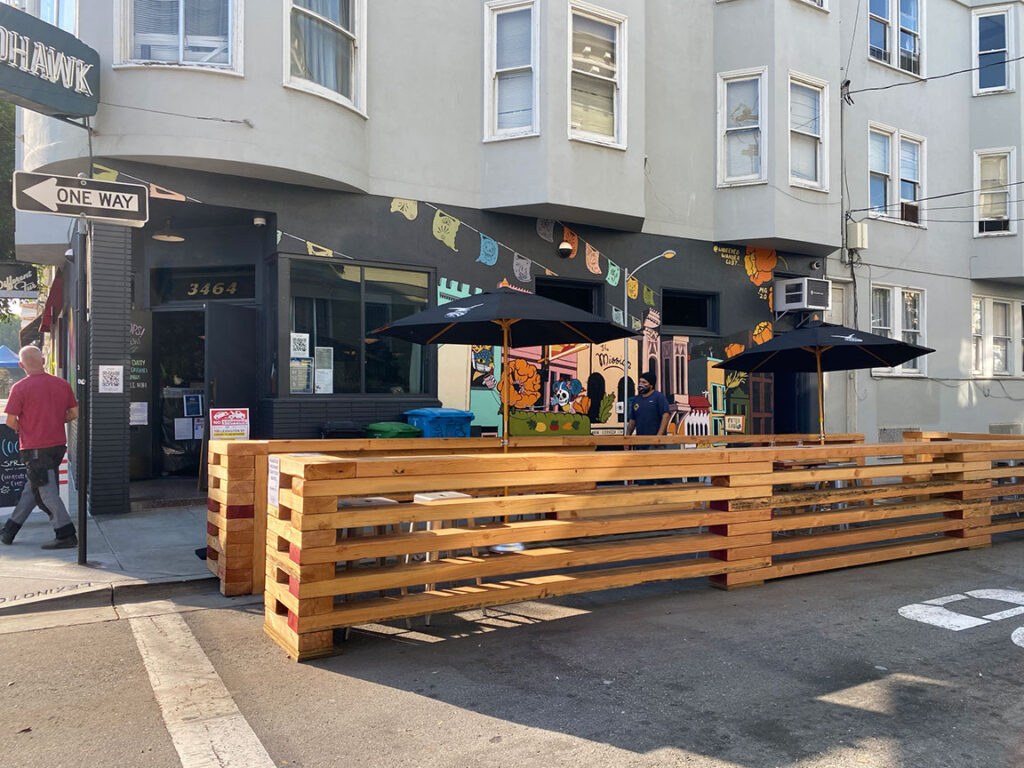Four years ago today, a startling conversation with an investor started my journey to “get good at sleep.” Years of trial & error, research, and life logging led to the ideas summarized in this post.
Implementing the habits and ideas outlined in this post have exponentially boosted my productivity and sense of well-being in life. Sharing them here in case helpful for other founders who can and must get better sleep. A summary of the conversation that sparked the journey is included at the end.
Why should founders invest in sleep?
Invest the money and time into your sleep practice. It’s worth it. You’re worth it.
It’s a compounding investment. You’ll accumulate new skills and unlock new worlds of possibility.
You will become increasingly capable of doing your job – which gets harder at each new rung of success you unlock during the startup years.
I failed to understand this until shortly after that startling conversation, and didn’t take pursuing better sleep seriously enough until around a full year after that conversation. The cost of my poor sleep extended beyond the discomfort of sleep deprivation, the irritable temperament, the avoidable mood swings and bouts of depression. The cost was cumulative, in the failure to recover from the extraordinary daily stresses of building a company, and in my inability to synthesize creative solutions to increasingly difficult problems quickly enough.
Poor sleep cost me dearly.
A bit of context:
- This is my 10th year as a “life logger” – I started tracking inputs, journaling, quality of life, daily inputting various quant & qual metrics starting January 2013. I added several sleep-specific metrics after the 25 Feb 2019 conversation.
- I’d been awful at sleep most of my adult life. I would lie awake and just think for hours on end. It used to take me an hour or more to fall asleep, I’d sleep in fits and starts, and would often skip sleep altogether. Now I generally get very high quality, sustained sleep most nights and fall asleep on average 11 minutes after hitting the bed.
Why sleep hacks specifically for founders?
Generally good sleep advice that might work well for most people can fall short for founders for several reasons:
- Founders generally have higher work load and responsibility beyond the average person. A professional athlete has a different nutrition regiment than the average person, so it’s not crazy to think that founders can have different sleep requirements.
- Optimizing sleep for overall comfort and consistency is important for most people, but optimizing sleep for creative synthesis is even more important for founders.
Optimizing sleep for creative synthesis is the target goal for ideas described in this post. Many of these ideas don’t match up with main stream sleep advice. Some of these ideas might even be exceptionally bad for most people. But all of these ideas have helped me personally get really good at sleep.
I’m not a doctor or a sleep scientist, please DYOR and find what works for you.
Founders can optimize sleep for creative synthesis.
Even after decades of research, sleep is still borderline magic. We know that it’s vital for many important processes of body and mind.
For founders who need to be prolific problem solvers, the creative synthesis gained in certain forms of sleep is essential to success.
Recently, cognitive scientists have begun to unravel of some of sleep’s mysteries. There are stacks of great sleep research papers, but “How Memory Replay in Sleep Boosts Creative Problem-Solving” by Lewis, Knoblich & Poe was the eye-opener ???? for me:
Memory replay mechanisms in non-REM can abstract rules from corpuses of learned information, while replay in REM may promote novel associations. We propose that the iterative interleaving of REM and non-REM across a night boosts the formation of complex knowledge frameworks, and allows these frameworks to be restructured, thus facilitating creative thought.
Creative problem-solving is critical for all spheres of innovation and pioneering thought. As such, it forms the foundation of a technology-based economy …
Such processing can provide mental clarity and facilitate creative problem-solving by promoting the comprehension of an overall structure or the extraction of hidden regularities or ‘gist’. …
Paradoxically, creative problem-solving often also requires the discovery of unexpected solutions through seeing beyond such rules and building new associations, which lead to novel solutions via analogical reasoning. Such creative leaps can be actively blocked by preconceptions or prejudices, which prevent us from seeing otherwise obvious solutions.
Importantly, these insightful rule-breaking associations are also facilitated by sleep.
from “How Memory Replay in Sleep Boosts Creative Problem-Solving” (NIH)
In other words… mixing sleep phases facilitates creative problem solving. Their paper goes on to document the specific mix of sleep phases where different types of cognitive processing seem to occur.
The result suggests something much more elaborate than the classic “8 hours a night” advice received.
When pairing high quality phase-mixed sleep with techniques that guide the sleeping mind’s activities toward target outcomes, founders can hack sleep to help solve extremely complex problems by way of creative synthesis.
I’ve been practicing this approach to sleep for a few years now, generating results that, frankly, I never would’ve achieved “on my own.”
The rest of this post talks about things that I’ve found that work for me in order to maximize those results, which seem to compound in value.
Please find what works for you, but some of the ideas herein might be worth a try.
Invest in your hibernation lair: build your sleep stack
Invest in your hibernation lair.
- Eight Sleep Pod pro
- Eight Sleep changes the game by removing heat during sleep. If you tend to “run hot” like me, Eight Sleep is a must-have in your sleep stack.
- However mind that the technology layer consists of plastic, which is inelastic – movements are more readily telegraphed if you share your bed with a partner, you’ll feel their movements more, and stomach sleeping is impossible.
- This Pro sleep mask from Manta
- I’ve used Manta Manta masks since the very early versions. Early Manta masks were superior to any other sleep mask on the market at the time. But the Manta Pro completely destroys the earlier versions of Manta masks. This mask is brilliant in comfort, effectiveness, convenience. It weighs nothing, gets the job done, feels like air, and is exceptionally well-designed.
- Noise cancelling headphones
- I use Bose QC45, but don’t know if they’re the best for sleep. They’re comfortable and fit nicely with the Manta sleep mask. Just be sure to disable voiceover and make sure they’re charged before heading to sleep, to avoid distraction in the night.
- To avoid any accidental connection to other devices or dead batteries, I have pair of headphones exclusively for sleep. They charge when I wake up and are by the bed ready to go at night.
- Apple Watch / equivalent sleep trackers
- Keep on Sleep mode, avoid vibration / beeps
- Use to track heart rate, log this – you’ll spot correlations that lead to surprises. For instance, my Low Heart Rate will be at least 15% higher if I have more than 1 beer in the day.
- Air purifier with white noise
- Particulate matter can destroy sleep. Dust, pollen, pet hair – anything that can enter your airway can keep you from achieving optimal sleep, or wake you up. A high capacity air purifier improves air quality in your hibernation lair, and adds white noise to your acoustic environment.
- The right temperature and humidity
- For me the right sleep temp is 69 degrees ambient.
- It took moving from plush Karl the Fog perfectly humid SF air to a semi-arid climate to realize that humidity – or lack thereof – profoundly impacts sleep. I ended up needing to install a home humidifier, and still sleep with a Levoit (set to warm, 65%) next to the bed.
- Blackout curtains
- Even though the Manta is immensely effective, you’ll still want to minimize light leakage and amount of light received during bathroom breaks, while falling asleep, etc.
- Phone on DND
- The latest phones allow highly customizable do not disturb modes in which certain contacts can pass through your blocks in case of emergency. Otherwise block every potential disturbance.
What about travel?
Travel is unavoidable for founders. How do you maximize odds of great sleep when not at home? Invest in a mobile hibernation lair kit, adjust your habits for local time zones, and do your homework on places to stay:
- Get a second sleep mask, headphone set, and a travel humidifier for visiting arid climates.
- Research hotel reviews – fellow sleep enthusiasts will rate bed quality and noise. When in doubt, call ahead.
- I ask to be placed on a high floor away from the elevator. This helps minimize incidental traffic noise. Use towels along the bottom of the door to help further reduce hallway noise.
- Make sure your room includes a fan you can keep “on” even during the night. If this doesn’t work, use the white noise video linked below under “Dream Machine” on your laptop to create ambient noise. Just make sure all other notifications, bells & whistles are completely silenced.
Habits & Inputs
- Build a daily script.
- Great sleep stems from great waking habits. The over-active founder’s mind is a powerful tool if wielded correctly, but can be difficult to turn off.
- Build the habit of a daily script – a note file you copy and paste then fill out to contain the things you need to do each day, the things you need to get done on a specific day, and any other pieces of self-guidance you want to include. Make sure to check every last thing off each day, or move forward those undone things that still need to get done, with a clear outline of what you need to do the following day.
- This habit will help to fully ground out the chatter that will otherwise keep your mind engaged when you should be falling asleep.
- Guide your desired synthesis.
- Before falling asleep, think about the specific problem or general area where you want to create results the following morning. It’s the #1 thing you put on your daily script for tomorrow.
- Cold therapy. A couple of minutes per day in 50 degree or below water profoundly changes the mind and body. I’ve found it to be a miracle for sleep.
- Hot bath before bed. Spiking overall body temperature before sleep triggers the lowering of core temperature. The brain needs to shed a few degrees to bring on great sleep.
- Intense BUT SAFE workouts.
- Weights – there is nothing sweeter than the deep, narcotic sleep the night after an intense weight session. Mixing barbell, kettlebell, and dumbbell activities, and mixing low rep heavy, time under tension, and high rep cardio movements seems to work best.
- Walking works wonders for sleep. When you absolutely must sleep deep tonight, try getting at least 15,000 steps on flat land or 5-10k hilly steps during the day. Beast mode: get a weighted vest. You look goofy as hell but it’s highly unlikely you’ll be awake more than a few minutes after hitting the bed after this workout.
- Running is great, too, but I find it less effective than long walks and weights for some reason, especially after Covid vaccines reduced my V02 Max by 5 points.
- I’ve not found the magic time to work out, but generally like doing very early workouts some of the week, and later afternoon workouts other parts of week.
- One caveat: be safe when working out, because physical injuries keep the mind activated during sleep. It’s hard to know until you try to sleep after sustaining the injury, but there is something mentally active about garden variety injuries – a torn rotator cuff can cost you many sleepless nights for weeks on end. The cruel paradox is that you need to be sleeping for optimal healing.
- If you do get an injury, try a bio-wave electrolysis machine rather than pain pills (see “sleep threats” below)
- Plenty of sunlight during day
- I’m not sure if it’s vitamin D or photo receptor modulation or some other mechanic, but my sleep is always better if I get a good dose of sun during day
- However, sunburn is bodily injury, which can have the opposite effect by taxing the sleep and distracting with another stimulant (pain)
- BUT – make sure that no sunscreen (or other agitating topical) can seep into the eye at night, because the irritant will severely alter REM and prevent deeper sleep…
- ASMR while falling asleep – but you don’t need weird videos or soothing sounds to trigger ASMR. You can trigger ASMR yourself. I find concentrating on all-encompassing gratitude – for all that I have, all that I seek, all that I am, all that I will become – is the easiest way to trigger a deep, sustained “dose” of ASMR.
- Bias toward over-hydration
- Better to wake up a few X for bathroom breaks than to not have enough water in system for all the processes that need to take place during sleep.
- A SMALL amount of mag or cal-mag before bed – I found a tbsp in a quart of water to work wonders. 2-3 bathroom breaks a night, I’ll drink a bit of the magnesium-infused water
- Pillow Fort!!!!!
- I ignored the importance of pillows and body support until very recently. It took many years of experimenting to figure out a very strange pillow configuration:
- I have to sleep with two full pillows under my knees. Doing this removes lumbar pressure so I can relax.
- I also found out that I prefer no pillow under my head!
- But I also prefer one pillow over each shoulder, angled away from my head like front-mounted wings. No idea why, but this weird configuration does the trick most nights.
- However! If I’m getting sick with something respiratory or nasal, it’s extremely important to elevate the head or I’ll cough the entire night.
- Avoid sleep threats like “time release sugars” and inputs that destroy creative synthesis
- While a melatonin supplement does seem to help with sleep onset, it also seems to “scramble” the sleep itself, and in the end I find that it undermines the invaluable creative synthesis that would’ve occurred falling asleep naturally.
- The “magic” in Magic Spoon cereal is allulose, a poorly-researched sugar substitute that looks good on paper as a ketogenic miracle, but seems to seriously disrupt sleep from my personal trials. It seems to function like “time release sugar” with delayed onset energy. Every night after consuming anything with allulose, without fail I would wake up with the same deteriorated sleep quality and “buzzing” brain effect.
- While alcohol doesn’t metabolize into sugar as is commonly believed, the net effect is comparable: sleep while metabolizing booze is shallow, easily disturbed, and poor for synthesis.
- Many people swear they’re “immune to caffeine,” and I was once of them, or so I thought. I was surprised by personal A/B tests of sleeping heart rates (LHR, RHR), differences in sleep graph, and brain wave reads with caffeine cessation before 10am versus drinking caffeine later in the day. I try to have caffeine no later than 9am Sun-Wed, but relax this Thu-Sat.
- Foods that spike brain activity – excessive salt, for example, and foods that cause allergic inflammation. Foods very high in fat can keep the brain buzzing.
- The stomach is a second brain with its own neurons and linkages. It can make or break your sleep session. Heart burn can cost you the good stuff. A weird trick I learned from my dear Grandma V – who partied like an animal and slept like a rock – a teaspoon of baking soda before bed!!
- Certain spices and food additives will keep me awake for hours. I still don’t know which specific foods do this, but certain curry mixes and most processed foods consistently reduce sleep quality and overall synthesis.
- Forgiveness & patience
- Even with investment of time, money, and practice, the sleep won’t always come the way you hope.
- Be patient and forgiving of yourself. You’ll get there the next night, and learn from tonight. A sleepless night is not the end of the world.
Advanced sleep hacks – proceed with caution
If it only came down to a few standard tools, habits and guidelines, most founders would deep sleep most nights. But there is an ocean of mystery between what works good enough most of the time and what works exceptionally well. Here are some controversial tools I’ve found to be extremely effective at maximizing my sleep for creative synthesis.
My “Dream Machine” – A dedicated sleep iPad with a Youtube sleep playlist
With over-active brains, one paradox is that founders often need “escape stimuli” to relax. To let the mind wander.
Most sleep advice lists recommend an hour of fiction before bed, but if you’re like me, this can backfire pretty fast. For instance, you start out from the Shire and the next thing you know you’re deep in Moria and you need to wake up in two hours…
I’ve tried other forms of escape stimuli – audiobooks, music, guided meditations – they all have limited “stopping power” in the face of an extremely charged up mind.
One of the strangest, most powerful sleep hacks I’ve discovered flies in the face of popular sleep advice, which dictates “NO DEVICES!” It took a lot of trial and error and config to make it bulletproof, but the result has multiplied my ability to optimize sleep for synthesis. No matter how stressful the day, no matter how active my mind, this technique has become an absolute multiplier of sleep quality for me.
I love falling asleep to simple but engaging videos like SEA, Why Files, After Skool, etc. These 20-30min vids are far more effective at bringing sleep for me than fiction on a kindle, and I’m not equipped with the super power of just being able to nod off to sleep without some form of content input. I also utilize guided meditations that, in an ideal world, auto-play after I’m already asleep, and really high quality white noise to promote relaxed sleep.
I ended up building a “Dream Machine” – an iPad that only plays select videos in a very specific way. The net effect is something like the warm, flickering screen of an old black &white tv like my grandpa would fall asleep to in the recliner.
There are so many things that can go wrong: autoplay, loud noises, ads, bright screens, auto-update shut off, alerts…
However, if you’re willing to invest a few hours, you can create your own dream machine setup. You need a dedicated ipad, a premium (ad-free) youtube account, and a willingness to experiment with what works for you. Here’s how:
- Optimize the device to be a sleep aid.
- Disable auto-updates.
- Remove other apps and titles – I do keep a note file in case I have “must write down” ideas while falling asleep.
- Set the screen filter to warm shift to remove blue light.
- Set the color filter to grayscale only to remove color stimuli.
- Set it to the lowest possible brightness. You won’t be able to see it with the lights on, and you won’t get excited by the light when dark.
- Have only one bluetooth connection – pair with your noise cancelling headphones.
- Set the max volume to be comfortable and not distracting, it should never be loud.
- Use this device only for sleep aid – nothing else.
- Build your zzzzzzzzzz list
- The list material varies but is generally three “phases” – vids to fall asleep to, followed by a guided meditation, followed by white noise.
- My personal faves include SEA (space!), Why Files (conspiracies!), After Skool (alternative viewpoints!), – but you’ll ultimately need to find what works for you. Intriguing, but not gripping.
- Plug in your fave guided meditation after around an hour or so of fall asleep material. This way it starts to play after you’ve already dozed off.
- Follow that by white noise. Here’s some really, really good white noise.
- Each night drag the list order for the three phases. Click through to test – sometimes Youtube mixes up order and you have to reset the last played marker each night by scrubbing an unfinished video to the end.
- Setup takes about a minute per night, but the result can become an extremely powerful sleep aid.
Optimize your weekly routine for creative flow state blocks
Another core tenet of popular sleep advice is to fall asleep each night at the same time and wake up each morning at the same time.
While that advice makes sense for most people, I find that it’s not necessarily ideal for founders optimizing for creative synthesis, for two reasons:
- It’s unrealistic for founders, especially founders with kids. Between travel, the increasingly global nature of remote teams, and the happenstance of a schedule that’s busier than the typical person.
- For better or worse, we’ve organized modern work according to 7 day weeks, and those weeks established a certain rhythm. To make the most of creative synthesis requires a mix of peak creative output and deep recovery. That rhythm is at odds with a “same time every day / night” rhythm. Here’s a rough outline of my typical fall asleep / wake up times to illustrate:
- Monday: sleep by 7p, wake by 2:30a Tues. First meeting 9a.
- Tuesday AM is my big creative flow state block. I get up very early well ahead of the commotion of the day to deeply focus. I’ll do this again on Wednesday as needed.
- As the week progresses, I back off of the very early rise and “play it by ear” – one of the mornings will be a recovery morning, and if there are social events of an evening, I work those in without worry that I’ll lose sleep.
- Saturday is flexible, up early to clear mind from week, stay up late to watch movies with family etc.
- Sunday is a reset day, I do three intense workouts to make sure I’ll fall asleep at night: sleep by 7:30p, wake by 3:30a Mon. First meeting 8:30a.
It’s a general outline: I am not religious about any start or stop time. Going with the flow and adapting to change yield better value than stressing over rigidity.
Backstory – the startling conversation that prompted my exploration of sleep
Four years after the startling conversation, I now think of sleep as a practice, like yoga, or a professional skill. Four years in to building up my sleep understanding, rituals and habits, I still have no idea what exactly happens during sleep – only that it’s possible to get better at it, and that getting better at sleep yields compounding value for founders.
I mistakenly thought that “powering through” sleep-deprived days was part of “the grind.” Here is the story of when I became aware that I was very wrong.
On this day four years ago, I received a startling piece of advice from Ashton Kutcher during a strategy session with the thoughtful Sound Ventures team at their Beverly Hills office.
“How are you doing?” he asked me suddenly in the middle of my opening update.
“Great, other than lack of sleep,” I said, then continued with the update. Which was true, but not noteworthy in my mind, as I’d been pretty bad at sleeping for as long as I could remember.
While not a total insomniac, since high school I’d slept very little most nights, and in erratic form, some days missing sleep entirely, at times on purpose. In my twenties I’d pull routine all-nighters, sometimes back-to-back. In college these were a kind of badge of honor, misconstrued as a sign of toughness and dedication rather than what they really were: a reflection of poor time management.
I only mentioned “lack of sleep” when he asked, because in the months leading up to that meeting, I’d gotten so busy with work that my historically poor sleep had combined with fewer hours in which to sleep, and it was beginning to take a toll, which he seemed to sense.
I began to move to the next points in the update, but he cut back in: ”You need to get good at sleep.”
Something about this startled me. Many things, in fact: that he cared enough for the well being of one of the founders he backed while being busy with family and multiple careers. That sleep was something I could get “better at” – what the hell did he mean by that? Isn’t sleep something that happens… or doesn’t? That it was an important enough topic to pause a strategy session. Above all – that I really hadn’t thought much about sleep up to that point. If anything, I viewed sleep as nice-to-have, and something that was at odds with the demands of being a founder.
He clearly thought it important, because months later, at our next checkin, his first question was “how’s your sleep?”
It was improving, but I still had a long, long way to go.
Fast forward to today – in hindsight, I think he’d sensed my fundamental misunderstanding of sleep, included my under-estimation of its importance, and wanted to make the point in a way I’d absorb the advice.
I did absorb that advice, and am beyond words grateful that he shared it in a way that I’d “get it.”
Footnotes / further reading
These articles were somewhat helpful in shaping the thoughts summarized above, but far less so than experimenting with what works, using a life log to incrementally improve.
How Memory Replay in Sleep Boosts Creative Problem-Solving – PMC
ADHD is bi-directionally linked to entrepreneurship. Not all founders have ADHD, but for those that do, sleep can be extremely challenging as business takes off.
Trouble sleeping and ADHD go hand in hand. Theories about why this is so range from melatonin production quirks to circadian arrhythmia, but my guess is it stems from our heightened response to stimuli. Noises, changes in temperature, and light might impact sleep in someone with ADHD more so than someone otherwise. The same lower stimulant barrier for inputs processed during waking life remain so during sleep.
48 Sleep Hacks – How to Get the Best Sleep of Your Life, Every Night!
An Algorithmic Solution to Insomnia
Sleep. Recently I’ve been getting great sleep… | by Harj Taggar | Medium
- I like that Harj caveats “this advice won’t work if you have kids.”
- And he shares the best advice on getting good sleep I’ve heard was from Naval — “don’t run a company” 🙂
How Memory Replay in Sleep Boosts Creative Problem-Solving – PMC













